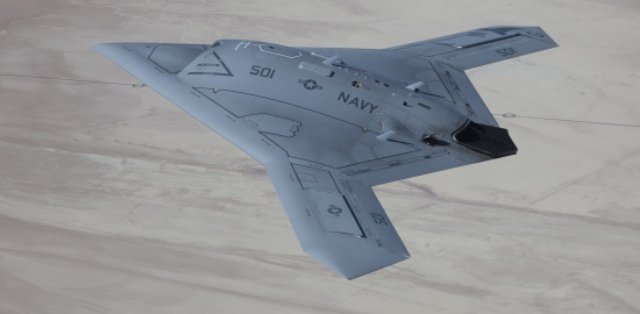 Plans to demonstrate autonomous aerial refueling of the Northrop Grumman X-47B unmanned combat aircraft are a casualty of cuts in the U.S. Navy’s fiscal 2014 budget.
Plans to demonstrate autonomous aerial refueling of the Northrop Grumman X-47B unmanned combat aircraft are a casualty of cuts in the U.S. Navy’s fiscal 2014 budget.
Previous plans called for the X-47B naval unmanned combat air system demonstrator (UCAS-D) to conduct autonomous Navy-style probe-and-drogue and Air Force-style boom-and-receptacle refueling tests in 2014.
The autonomous aerial refueling (AAR) tests were to follow the main demonstration of unmanned aircraft-carrier operations, which is still funded and slated for next month.
The two X-47B demonstrators are at NAS Patuxent River, Md., completing land-based carrier qualification. The final hurdle—arrested landings—are about to begin ahead of deployment to the carrier USS Bush in May.
“The requirement for AAR demonstration with the X-47B was removed from the program in the FY14 budget,” says Capt. Jaime Engdahl, Navy UCAS program manager. “We plan on conducting a final AAR flight-test event later this fall on a manned surrogate aircraft to demonstrate multiple AAR technologies.”
The Navy and Northrop are using a Learjet operated by Calspan and an Omega-owned Boeing K-707 tanker to test the dual-data-link precision relative-navigation system that would allow the UCAS to rendezvous with the tanker, plug in and refuel autonomously.
“At the current time, the Navy plans to conduct this phase of the UCAS-D program using surrogate test aircraft instead of the X-47 itself,” Northrop Grumman says. “The Navy believes it can achieve the same level of AAR technology maturation with these surrogates as it would by using the X-47B.”
The budget cut is a second blow to Northrop’s hopes to develop technology to enable aerial refueling to extend the endurance of unmanned aircraft. Previously, the U.S. Defense Advanced Research Projects Agency ended a program to demonstrate autonomous high-altitude refueling between two Northrop RQ-4 Global Hawks.
Delays in modifying and testing two NASA-owned Global Hawks, one as a probe-equipped tanker and one as a hose-and-drogue-equipped receiver, resulted in the programme ending before actual refueling could be demonstrated in flight.
Source: Aviation Week
